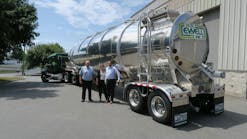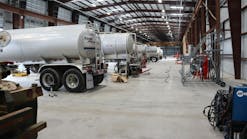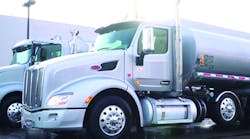It is no surprise to anyone that in 2020, tank truck drivers were listed as key essential workers during the pandemic.
The country realized on lockdown it simply can’t function without truckers. Everyone remembers the toilet paper shortages and delayed Amazon deliveries, but we also learned of the importance of liquid tank carriers in delivering hand sanitizer, cleaning chemicals and other products needed to fight the coronavirus. And now more people understand the critical nature of the supply chain, and how much the trucking industry means to the United States.
Yet, despite the realization that truck drivers are needed more than ever, there still is a national shortage. America’s truck driver shortage isn’t a new phenomenon, but it has certainly intensified in recent years. At the end of 2017, the trucking industry needed a record 50,000 new drivers to keep up with demand—and the gap hasn’t really closed that much over the last four years. In fact, it actually has widened. In 2018, the trucking industry was short nearly 61,000 drivers, up nearly 20% from 2017 according to a 2019 report by the American Trucking Associations (ATA). And, according to the ATA, if these trends continue, we could see the shortage continue to grow to a deficient of over 160,000 drivers by 2028.
One of the reasons for the shortage, according to the ATA, is that workforce is aging. The average age of a truck driver is 55 years old, and many drivers opted for early retirement in the last year due to the pandemic, or chose to pursue alternative careers outside of trucking due to COVID-19-related health concerns.
This further compounded the workforce shortage. There are simply not enough qualified, younger drivers to replace those who are leaving the profession. Over the next decade, the trucking industry has said they will need to hire more than 1 million new drivers.
Trucking recovery
There is hope that we will start to see an increased focus on creating a healthy, diverse and more stable workforce. The industry can start to overcome the driver shortage by creating pathways for new workers and making the profession attractive enough to bring in a younger generation. Here are four thoughts on how to attract new workers:
Change the rules. The 21-year-old interstate driver requirement prevents the industry from recruiting drivers right out of high school, and this is a missed opportunity for the industry and for growing the workforce. There is a pilot program currently underway with the Federal Motor Carrier Safety Administration (FMCSA) that would allow 18 year olds to enter the industry, and that would certainly help close the gap. Surprisingly, while 49 states allow individuals to obtain their commercial driver’s license, commonly known as a CDL, at the age of 18, federal regulations prohibit CDL holders under 21 from driving across state boundaries. This prohibits many carriers from hiring younger drivers to haul cargo from state to state. The pilot that is underway would eliminate the age obstacle while requiring enhanced safety training and mentorships for new drivers.
Encourage diversity. In addition to targeting a younger demographic, the industry needs to make real strides in recruiting women and minorities. According to the ATA, women only account for 6.6% of the truck drivers in the U.S. This seems like an untapped group that could make a huge difference and an immediate impact. In addition, the ATA reports that only 40.4% of all drivers are minorities. Aside from addressing the driver shortage issue, there’s also another business case to be made for diversification. Last year, McKinsey & Company released a report stating that diverse companies are likely to be more profitable than non-diverse companies. Diversity won’t just help fill open positions, it will deliver a better bottom line.
Focus on driver compensation. Driver compensation has been an ongoing topic of discussion for years. As the shortage continues, the industry must have a creative and competitive compensation plan in order to attract young workers. Some carriers have discussed increasing pay, moving to hourly pay, creating predictable work schedules, and allowing more home time to help attract and retain drivers. But one size doesn’t fit all. Some companies pay drivers by the mileage, while some pay a yearly salary—and all this varies from state to state and by what type of freight is being hauled. An attractive, stable salary and benefits could draw more people to this profession.
Utilize Technology. Adapt the job of truck driver to a new generation of younger drivers rather than trying to fit new drivers into the older generation’s trucking model. Millennials are used to working with the latest technologies such as automation and self-service. The profession should take a look at how to capitalize on and utilize these technologies. Also, no longer do we live in an era where self-driving cars are a myth. Fully autonomous vehicles are the future where trucks could be equipped with short- and long-distance radars, cameras, sensors, 3D mapping and laser detection. This will surely revolutionize the industry and give rise to a generation that expects to work with the latest technologies. In addition, the use of mobile technologies can keep drivers safe with navigation systems, traffic re-routing technology and weather notifications. Mobile technology can also help reduce complex and manual processes like inventory monitoring and updating using pen and paper.
These are just a few ideas to address the driver shortage in the trucking industry. If they can work alongside the new administration, adopt some of these policies, and consider how to attract a younger generation of workers, we could see the truck driver shortage start to level off in 2021.
We all realized last year while under shelter-in-place orders how important is transportation to every consumer and business—so let’s make sure to keep the trucking industry moving forward.









